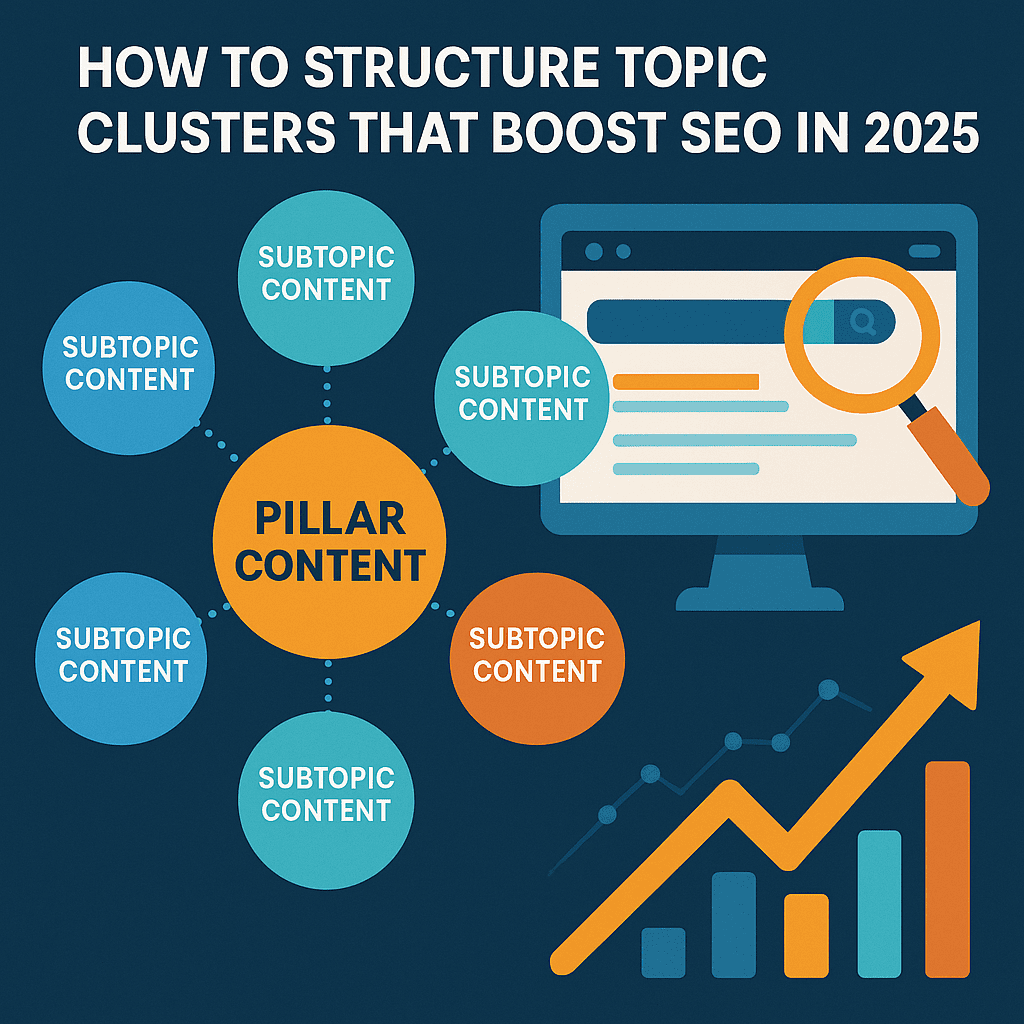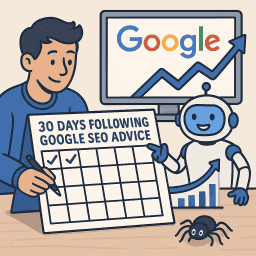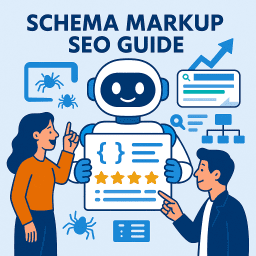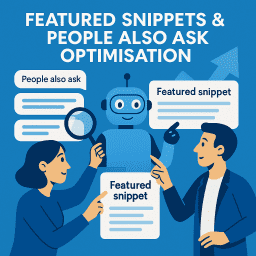How to Structure Topic Clusters That Boost SEO in 2025
📚 A practical guide to building smart content silos and boosting search visibility

🕸️ Topic Clusters: The SEO Structure Google Loves
Topic clusters are an SEO strategy where a central page (called a “pillar page”) links out to multiple related sub-pages (called “cluster content”). This structure helps organise your content by theme, improving your site’s relevance in the eyes of Google—and your visitors.
📚 Why Topic Clusters Matter in 2025
- ✅ They boost topical authority
- ✅ They improve internal linking and crawlability
- ✅ They support AI Overviews and featured snippets
- ✅ They reduce content cannibalisation
Search engines are now more focused on context and relationships between ideas. Topic clusters reflect this shift perfectly.
🧱 Pillar Pages vs. Cluster Pages
- Pillar Page: A broad, comprehensive page that covers the core topic (e.g. SEO Basics)
- Cluster Pages: Supporting articles that dive into specific aspects like:
📐 How to Structure a Topic Cluster
- Pick a Broad Topic: Use tools like Ahrefs, SEMrush, or ChatGPT to brainstorm viable pillar ideas with multiple subtopics.
- Create a Pillar Page: Write an in-depth guide linking to all related cluster pages.
- Write Cluster Content: Each article should focus on a single subtopic and link back to the pillar.
- Use Consistent Internal Linking: Ensure both pillar and cluster pages are cross-linked for context.
- Optimise for UX: Use a clear layout, TOC, and breadcrumbs for navigation.
💡 Example of a Topic Cluster
Pillar Page: News & Updates
Cluster Pages:
🤖 Topic Clusters and AI Search
With Google AI Overviews and Answer Engine Optimisation on the rise, structured content is more important than ever. Topic clusters help LLMs like ChatGPT and Claude better understand how your content fits together, increasing your chances of being cited in AI responses.
🛠️ Tools That Help You Build Topic Clusters
- 🔗 Internal linking: Link Whisper, Rank Math, Yoast
- 📚 Content ideation: AlsoAsked, AnswerThePublic, ChatGPT
- 📈 Tracking: Google Search Console, Ahrefs, SEMrush
🚫 Common Mistakes to Avoid
- ❌ Choosing topics too narrow or too broad
- ❌ Not internally linking correctly
- ❌ Cannibalising keywords across cluster articles
- ❌ Creating duplicate content in different cluster hubs
💬 What the Experts Are Saying
- Aleyda Solis: “Topic clusters signal authority and intent to Google—it’s the best way to show you’re the go-to resource.”
- Cyrus Shepard: “Good clusters lead to longer sessions, lower bounce rates, and higher rankings. It’s basic site architecture done well.”
- Marie Haynes: “In an AI-driven landscape, topic clusters are essential. They tell machines what your content really means.”
✅ Conclusion
Topic clusters are more than just an SEO trend—they’re a smart, scalable content strategy. Whether you’re building a new site or improving your existing one, topic clusters can improve your visibility, user experience, and long-term rankings.
“Think like a librarian, not just a marketer. When your content is organised, your authority skyrockets.”
— David Roche
📝 Recap and Clarify: Post-Specific FAQs
What is a topic cluster in SEO?
A topic cluster is a group of related content centred around one main “pillar” page, with supporting “cluster” pages linked together to improve SEO structure and authority.
How does a topic cluster help with SEO?
Topic clusters improve internal linking, make site structure clearer to Google, and boost topical authority, helping your content rank better for related searches.
What’s the difference between a pillar page and a cluster page?
The pillar page gives a broad overview of a topic, while cluster pages go into specific subtopics. They link to each other to form a cohesive structure.
How many cluster pages should I create?
There’s no fixed number, but aim for at least 5–10 well-written, relevant cluster pages per pillar to build strong topical authority and internal linking.
Do all the pages in a topic cluster need to link to each other?
At minimum, all cluster pages should link to the pillar page and vice versa. Additional interlinking between cluster pages can further boost crawlability and SEO.
How do I choose a good pillar topic?
Pick a broad, high-value topic relevant to your niche that your audience searches for—something that can logically support multiple in-depth subtopics.
Should pillar pages target broad or specific keywords?
Pillar pages should target broad keywords, while cluster pages focus on long-tail variations. This structure covers more search intent and boosts overall visibility.
Can existing blog posts be turned into a cluster?
Yes. You can audit and group existing content around central themes, then create a pillar page and update internal links to form a topic cluster.
Is this strategy suitable for small websites?
Absolutely. Even small sites can benefit from clear structure and focused content. It’s an excellent way to build authority and grow rankings steadily.
How long does it take for a topic cluster to impact rankings?
You may start seeing positive ranking signals within 1–3 months, depending on site authority, crawl rate, content quality, and the competitiveness of your topic.

















